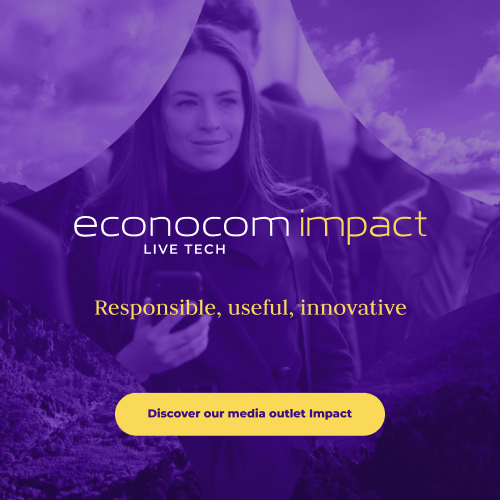
Gwladys Mampouya
Why and how can Green IT help reduce our global environmental footprint?
First of all, the pollution generated by digital technology has passed under the radar of CSR issues until now. The fact that it is immaterial tends to make us forget its impact (this already accounts for 3 to 4% of CO2 emissions in France, and 6.7% by 2040). In a world where digital technology is increasingly coming to the fore, it is considered as the pharmakon, both the poison and its solution. The combination of green IT & IT for Green will allow us to reduce our own IT footprint and contribute to reducing the global footprint. It is a multiplayer game played by companies and society because the challenges of responsible digital are varied: economic, energy-related, material, and social (power consumption of devices, data transmission impacting storage, but also the issue of computer equipment waste at the end of their service life). This waste is dangerous for humans and the environment, particularly during the product recycling phase, and the risks to health and biodiversity are real enough.
What criteria are you using to assess the positive impact of a new technology?
The positive impact of a technology can be judged in different ways. Never in the history of the world has a technology spread as quickly as digital technologies. Digital technology can promote or accelerate, through connectivity, financial integration, access to commercial and public services, help save lives, diagnose diseases through artificial intelligence for example. In conclusion, we must consider operational, technical, and societal criteria to ultimately judge its positive impact.
What is, in your opinion, a responsible company?
The environmental challenge has never been more evident than today. This awareness has become a priority for many companies and is reflected in their CSR strategies. A responsible company is an organization that takes into account the "Triple Bottom Line" or the 3 Pillars "People, Planet, Prosperity" in order to generate a positive impact on society. A responsible company must factor in the needs of both internal and external stakeholders to create value. It must also rely on collective intelligence: "Alone we go faster, together we go further".
How can each employee in a company act individually to transmit CSR values?
On environmental issues, one is usually never totally by oneself. It is one of these rare instances where internal/external "borders" are getting blurred. The company has tremendous strength and can carry the values of CSR, namely committed employees! The idea is to find and rely on this network of employees and managers, to carry out initiatives to develop projects and practices and to mobilize greater support for these environmental and social issues. This is what is happening within the Crédit Agricole Group as part of the Green IT program. We have created a Green community to share ideas, identify various projects enacted across entities, and contribute to the Green IT ecosystem by participating in local projects. There is a vibrant dynamic because it reflects the deep concerns of most of our staff.
What main CSR criteria are you looking for in vendors and partners?
We need to change the historical playing field with our suppliers. 46% of the technologies needed to achieve carbon neutrality by 2050 are not yet available or are under development.
In addition to traditional criteria, the procurement department has rapidly implemented a Responsible Purchasing policy, and CSR criteria have found their way into calls for tender in order to achieve "responsible purchasing" but also prevent risks. The percentage of CSR criteria within the Group has risen from 8% to 15%. The imperative of decarbonization as well as the risks of shortages of certain raw materials or metals must lead us to push the envelope and come up with other ways to collaborate with our suppliers (eco-development, consortium). At the same time, we will be looking for vendors that can offer more virtuous solutions/products to reduce our own footprint, for example in the purchase of IT hardware (laptops, servers). This is bound to add complexity to customer-supplier relations.
